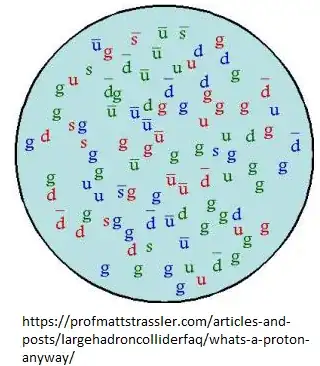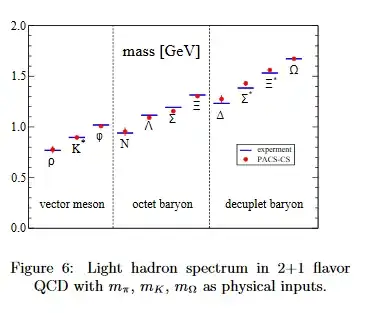I always thought that the mass of a proton would simply be the mass of the three separated quarks plus their binding energies. Nevertheless, I was once discussing with one of the developers of RICH detectors at LHC and he told me that this addition (quarks+binding) could account only for 30% of this energy (cannot remember what was the experiment performed to determine that), so where is the other 70% coming from?
2 Answers
There is this article which discusses the problem.
As a quantum mechanical entity, the proton has to be described by the summed four vectors of its constituents. What is binding the constituents within a nucleon (hadron) is the strong force which exchanges innumerable gluons and generates quark antiquark pairs among them. The binding of nucleons in contrast is a spill over force from the strong force, called the strong nuclear force in contrast, and it is similar to the van der Waals forces that bind atoms with the electromagnetic force.
The strong nuclear force can be modeled similar to the electromagnetic in the atoms, and energy levels can be defined for the protons and neutrons within the nucleus. This is not true for the proton and its innumerable constituents in addition to the valence quarks.
A theory has been developed, QCD on the lattice, which does aim at computing fairly well the masses of hadrons, i.e. strong interacting resonances . Here is a review.
- 236,935
this addition (quarks+binding) could account only for 30% of this energy ..., so where is the other 70% coming from?
Kinetic energy of quarks and gluons.

